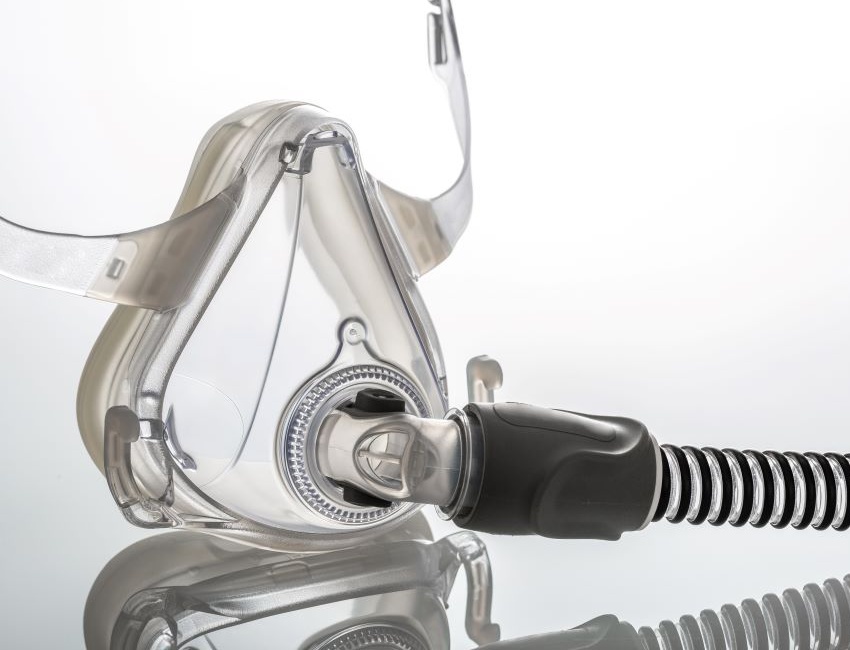What are the treatments for sleep apnea?

What are the treatments for sleep apnea?
 Marc Benton
Marc Benton
There are a number of treatment options available for the management of Obstructive Sleep Apnea, (OSA), each with various advantages and disadvantages.
CPAP devices
The most commonly used method, particularly for moderate or severe OSA, is nasal positive airway pressure, of which Continuous Positive Airway Pressure (CPAP) is the most usual version. Controlled administration of pressurized air through a sealed nasal or nasal/oral interface can open the collapsed airway and regularize breathing while asleep, abolishing the airway collapse that leads to Sleep Disturbed Breathing, (SDB). Recently, more sophisticated nasal positive airway pressure devices have been developed to treat Central Sleep Apnea, (CSA), which often did not respond well to earlier versions of positive pressure devices. Advantages to nasal positive airway pressure devices include easy accessibility, high efficacy, good quality data reporting, and typically good coverage by most insurance plans. Disadvantages include variable and often poor user compliance, inconvenience associated with travel and other lifestyles, and in some cases, poor efficacy. Additionally, the treatment is only effective when it is used – it does not cure the condition.
Oral Inserts
Oral appliances are also commonly utilized for the treatment of OSA. Mandibular Advancement Splints (MAS) advance the jaw forward, maintaining enhanced airway opening by preventing airway collapse that is caused by the lower jaw drifting backwards during sleep. Customized devices administered by trained dental practitioners may be beneficial for selected OSA patients, particularly those with milder forms of the disease. Advantages include portability, and convenience. Disadvantages to MAS include variable efficacy, no data reporting, discomfort, dental side effects, high cost, and variable insurance coverage with potentially significant out-of-pocket cost. Again, this treatment is not a cure, only being effective when used. Non-customized oral appliances, available online and much less expensive, may reduce snoring but have not been demonstrated to be largely effective in the management of OSA.
Surgery
Surgical options for SDB are much less frequently used for treatment of OSA than in the past. Tonsillectomies can be performed in selected children with good efficacy, but in adults, upper airway procedures have been largely abandoned because they do not result in long-term improvement. Jaw reconfiguration procedures in a small number of carefully selected individuals with severe OSA and retrognathia (receding chin) may be effective, but these are complicated, painful, and expensive procedures. More recently, some individuals with significant OSA unable to use nasal positive pressure devices have undergone surgical procedures implanting upper airway hypoglossal nerve stimulators to treat the condition, and while this appears to be effective, it is very expensive and has extremely limited application. Treatments for disruptive snoring in individuals who do not meet the criteria for a diagnosis of OSA are usually not covered by insurance, and pursuing therapy with an oral appliance or surgery may pose a very substantial financial burden on the afflicted individual.
Indirect therapies
Selected individuals with symptoms that are highly dependent on sleeping position, OSA may gain substantial benefit by interventions intended to reposition the sufferer, usually off their back, while asleep. A number of devices have been developed, such as pillows, braces, and beds, to promote this strategy. One low cost method is to sew a tennis ball into the back of a tee-shirt.
Weight Loss
Weight loss can be effective. Highly obese individuals undergoing gastric bypass procedures and/or medically overseen diets may lose enough weight so that their OSA improves or even disappears altogether. Less overweight people with milder forms of OSA may be able to lose enough weight to no longer require treatment. Excessive intake of alcohol, narcotic analgesics, or sedatives may worsen SDB, and reductions in consumption may result in varying degrees of improvement in the underlying condition.
Alternative Treatments
Treatments for OSA such as CPAP and MAS often do not completely solve the problem OSA or are poorly tolerated leading to a high level of non-compliance. In the case of CPAP, up to 83% of patients have been reported to be non-adherent to treatment. Compliance from MAS is higher but reduction of theApnea Hypopnea Index (AHI), the key measurement of severity, is lower and side effects including facial distortions can occur, These disadvantages have resulted in interest in treatments that address physiological rather than physical traits that have been found to contribute to instability of breathing control during night time breathing. These include hypersensitivity of the breathing chemoreflex or loop gain, poor responsiveness of upper airway dilating muscles and low arousal threshold during sleep. Breath training using a technique called minimally intermittent hypoxia, has shown promise. It has the advantage of being low-cost, non-invasive and may provide permanent relief. The breathesimple app includes these methods in its training programs. Why don’t you try it for yourself.
Further Reading
Weaver T E, Grubstein R R. Adherence to continuous positive airway pressure therapy: the challenge to effective treatment. Proc Am Thorac Soc. 2008. 5(2):173-178.
Doff M H, Hoekema A, Wijkstra P J, et al. Oral appliance versus continuous positive airway pressure in obstructive sleep apnea syndrome: a 2-year follow-up. Sleep, 2013. 36(9):1289-96.
Tsuda H, Almeida F R, Tsuda T, Moritsuchi Y, Lowe A A. Craniofacial changes after 2 years of nasal continuous positive airway pressure use in patients with obstructive sleep apnea. Chest. 2010. 138(4):870-4.
Battagel, J M, Kotecha B. Dental side-effects of mandibular advancement splint wear in patients who snore. Clin Otolaryngol, 2005. 30(2):149-56.
Eckert D J. Phenotypic approaches to obstructive sleep apnoea–new pathways for targeted therapy. Sleep med rev. 2016. 37:45-59
Edwards B A, Sands S A, Eckert D J, et al. Acetazolamide improves loop gain but not the other physiological traits causing obstructive sleep apnoea. J Physiol. 2012. 590(5):1199-1211.
Follow us on Linkedin to learn more:





